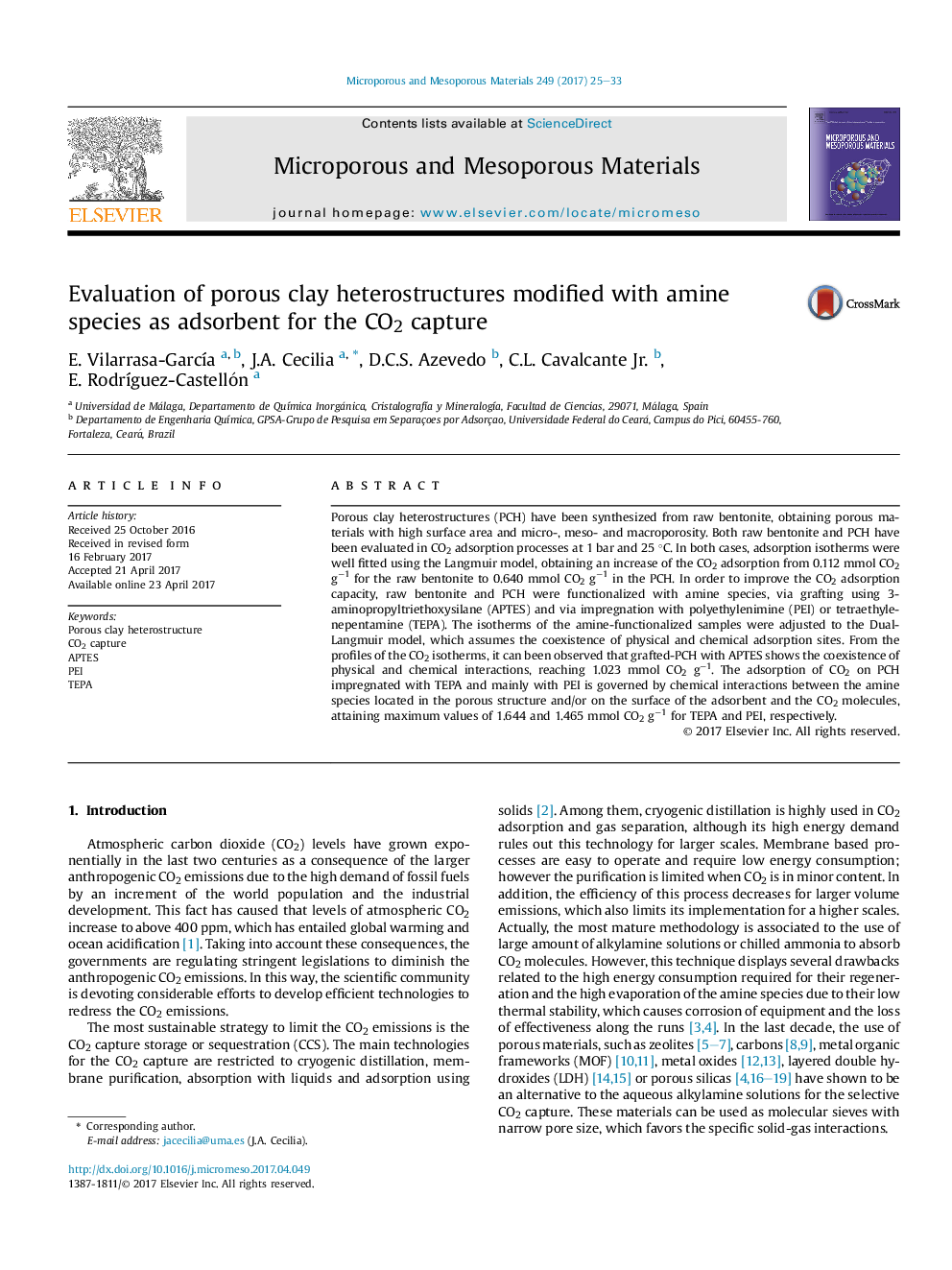| کد مقاله | کد نشریه | سال انتشار | مقاله انگلیسی | نسخه تمام متن |
|---|---|---|---|---|
| 6456583 | 1420410 | 2017 | 9 صفحه PDF | دانلود رایگان |

- Porous clay heterostructure were used as adsorbent for CO2 capture.
- Porous clay heterostructure displayed higher CO2 capture values than raw bentonite.
- CO2 adsorption capacity was increased by the incorporation of amine species.
- Dual-Site Langmuir model revealed physical and chemical adsorption sites.
- The addition of tetraethylenepentamine led to the highest CO2 adsorption at 1Â bar.
Porous clay heterostructures (PCH) have been synthesized from raw bentonite, obtaining porous materials with high surface area and micro-, meso- and macroporosity. Both raw bentonite and PCH have been evaluated in CO2 adsorption processes at 1 bar and 25 °C. In both cases, adsorption isotherms were well fitted using the Langmuir model, obtaining an increase of the CO2 adsorption from 0.112 mmol CO2 gâ1 for the raw bentonite to 0.640 mmol CO2 gâ1 in the PCH. In order to improve the CO2 adsorption capacity, raw bentonite and PCH were functionalized with amine species, via grafting using 3-aminopropyltriethoxysilane (APTES) and via impregnation with polyethylenimine (PEI) or tetraethylenepentamine (TEPA). The isotherms of the amine-functionalized samples were adjusted to the Dual-Langmuir model, which assumes the coexistence of physical and chemical adsorption sites. From the profiles of the CO2 isotherms, it can been observed that grafted-PCH with APTES shows the coexistence of physical and chemical interactions, reaching 1.023 mmol CO2 gâ1. The adsorption of CO2 on PCH impregnated with TEPA and mainly with PEI is governed by chemical interactions between the amine species located in the porous structure and/or on the surface of the adsorbent and the CO2 molecules, attaining maximum values of 1.644 and 1.465 mmol CO2 gâ1 for TEPA and PEI, respectively.
232
Journal: Microporous and Mesoporous Materials - Volume 249, 1 September 2017, Pages 25-33